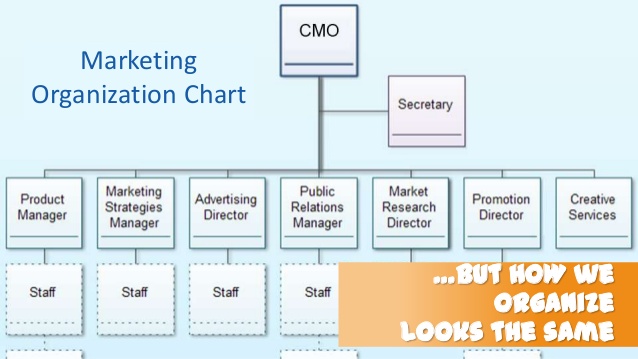Content

This type of analysis is most effective when it’s used to pragmatically recognize and include business issues and concerns. Consequently, SWOT often involves a diverse cross-functional team capable of sharing thoughts and ideas freely. The most effective teams would use actual experiences and data — such as revenue or cost figures — to build the SWOT analysis. In navigating through these four steps, you can develop a refined assessment of your benefits and areas of growth on both an internal and external basis. The concept of a SWOT analysis is one of the most popular and widely-used assessments. It helps to generate awareness of where a project, business or organization is currently at and where it has the potential to go.

With an objective in mind, a company will have guidance on what they hope to achieve at the end of the process. In this example, the SWOT analysis should help determine whether or not the product should be introduced. SimplicityRequires no extensive training or technical skills to be used successfully. The analyst needs only a comprehensive understanding of the nature of the company and the industry in which it competes. A fishbone diagram is a template that breaks down problems in a way that helps teams identify and address the root cause of an issue.
The SWOT Analysis Framework
SWOT analysis looks at the strengths, weaknesses, opportunities and threats of the company. Companies conduct these on a regular basis to analyze their company`s standings can provide information that is vital to maintaining and growing your business. The strengths and weaknesses sections of the SWOT analysis encourage you to take an honest look at where you or your organization is currently. It will spark questions of whether you actually are as good as you think you are or assure that you’re much better off than you thought. This analysis invites you to be honest about your current situation as you move forward in strategic planning. After all, you don’t want to venture out into a new opportunity that doesn’t match your strengths or is discounted due to your weaknesses.
Though it does not provide a straightforward solution to problems, it identifies the strategies for creating a business model that utilizes the company’s capabilities and resources. The external and internal elements that might affect a business’s development and success can be found and evaluated using the SWOT analysis. This could enable better planning by assisting businesses in choosing where to concentrate their efforts and resources in order to produce the greatest value. It may also be used to decide how to distribute resources best or create a long-term strategy. After you create your SWOT framework and fill out your SWOT analysis, you will need to come up with some recommendations and strategies based on the results.
Threats
Even with these tools, it might be challenging to complete a thorough SWOT analysis that considers all pertinent elements. For small enterprises or groups with tight resources, the expense of the analysis may be unaffordable. Furthermore, the analysis’ findings could not be precise or thorough enough to allow for decision-making. Finding the ideal balance between getting enough information to enable the team to make choices and gathering too much information that would overwhelm them and prevent them from doing so may also be challenging.
The idea is there is no right or wrong answer; all participants should be encouraged to share whatever thoughts they have. These ideas can later be discarded; in the meantime, the goal should be to come up with as many items as possible to invoke creativity and inspiration in others. Directives for a productive SWOT analysis Stay focused-separate analysis for each product-market combination is recommended. You don’t need to hire external consultants or expensive software to conduct a SWOT analysis.
→ Purpose of SWOT Analysis
A SWOT analysis is a planning tool which seeks to identify the Strengths, Weaknesses, Opportunities and Threats involved in a project or organisation. It’s a framework for matching an organisation’s goals, programmes and capacities to the environment in which it operates. When drafting a SWOT analysis, individuals typically create a table split into four columns to list each impacting element side by side for comparison.
A SWOT Analysis gives you a balanced view of yourself and the world in which you operate. It’s also one of the easiest bits of Strategic Analysis that you can perform and is a great way to get people thinking strategically without getting into the full detail of Strategy Formulation. It is well known that information is easier to understand when displayed as images. Thereby, SWOT analysis makes it easier o conceptualize large amounts of complex information by placing them in well-differentiated sections, which easily allows any viewer to grasp the nature of the subject being examined. Understand the legal positions on bullying and harassment at work, and how employers and employees can address the problem.
For example, if the swot analysis identifies a weakness with social media marketing, you may decide to hire an outside firm (such as Accu-Swot ) to come in and consult on how best to utilize this medium. In doing so, you can personally take advantage of what others have already learned through other companies while avoiding their mistakes. A company can use a SWOT for overall business strategy sessions or for a specific segment such as marketing, production, or sales. This way, you can see how the overall strategy developed from the SWOT analysis will filter down to the segments below before committing to it.
Company
Analyzing and understanding the data needed to conduct a SWOT analysis can be time-consuming. Every leader should always be aware of the advantages and the limitations for planning purposes. External forces influence and affect every company, organization and individual.
- In fact, I recommend conducting a strategy review meeting at least once a year that begins with a SWOT analysis.
- The company can look at its advantages and how they differentiate themselves from the market around them.
- For small enterprises or groups with tight resources, the expense of the analysis may be unaffordable.
- Releasing your SWOT analysis to your employees can also help them better understand the business and improve their performance.
Still, it leaves them vulnerable to a range of potential dangers and therefore defeats the purpose of using this analytical framework. Matching and converting is a strategy mostly unique to SWOT analysis, which involves pairing your strengths with your opportunities in order to discover or maximize your competitive advantages. It also involves looking for ways to convert weaknesses/threats into strengths/opportunities, or at the least minimize their harmful effects.
What Is Remote Collaboration? Top Tips & Tools for Remote Teams
For example, a business determines on each occasion, if a brainstorming session makes sense to address a strategic plan or competitive analysis. If so, the business then decides if it will use the SWOT method or an alternative tool to facilitate the session. One of the issues with SWOT analysis is that it fails to guide users on the necessary steps after the framework has been designed. Due to this, there is a tendency to abandon the technique after the initial stages of strategic planning and thereby reducing the usefulness of the technique. In the process of trying to evaluate both the internal and external factors affecting a business, important trends or insights about the market may be discovered.

By refining the thoughts that everyone had, a company can focus on only the best ideas or largest risks to the company. This stage may require substantial debate among analysis participants, including bringing in upper management to help rank priorities. In addition to data, a company should understand the right combination of personnel to have involved in the analysis. Some staff may be more connected with external forces, while various staff within the manufacturing or sales departments may have a better grasp of what is going on internally.
This can help companies avoid spending unnecessary time and money on projects that do not align with the vision of the business. The process of conducting a SWOT analysis is fairly straightforward, although it may take some time to develop. SWOT stands advantages of swot for strengths, weaknesses, opportunities and threats that you identify for yourself or within your organization. Conducting this type of analysis comes with several benefits and can be practiced at both an organizational and personal level.
Associations frequently give a SWOT analysis in a diagram form with each one fragment presented in different quadrants. Threats – Are external components beyond the controlling ability of your business, that can possibly put your marketing methods, or the whole business, at threat? Weaknesses embody the negative internal facets of your business that lessen the general esteem, your services or products give. This class can be to a great degree supportive in giving a hierarchical appraisal, if you concentrate on a precise identification of your company’s weaknesses. Businesses need to develop a plan of action to address the areas that need improvement and capitalize on the opportunities identified.
The study takes into account both internal and external aspects, including aspects related to the market, consumers, competitors and the economic environment. Internal considerations include capabilities, resources, and competitive advantages. The internal analysis will focus on the strengths and weaknesses of the organization and will include issues related to staffing, funding, programs, projects, processes, and more. Stakeholders are key to a thorough SWOT analysis, as they provide a deeper understanding of both internal and external processes and procedures that may otherwise not be visible to the organization. Another benefit of using swot analysis is that it helps guide company operations by providing valuable insight surrounding your internal factors (strengths and weaknesses). You can use this data to create sound business plans which will help map out future goals.